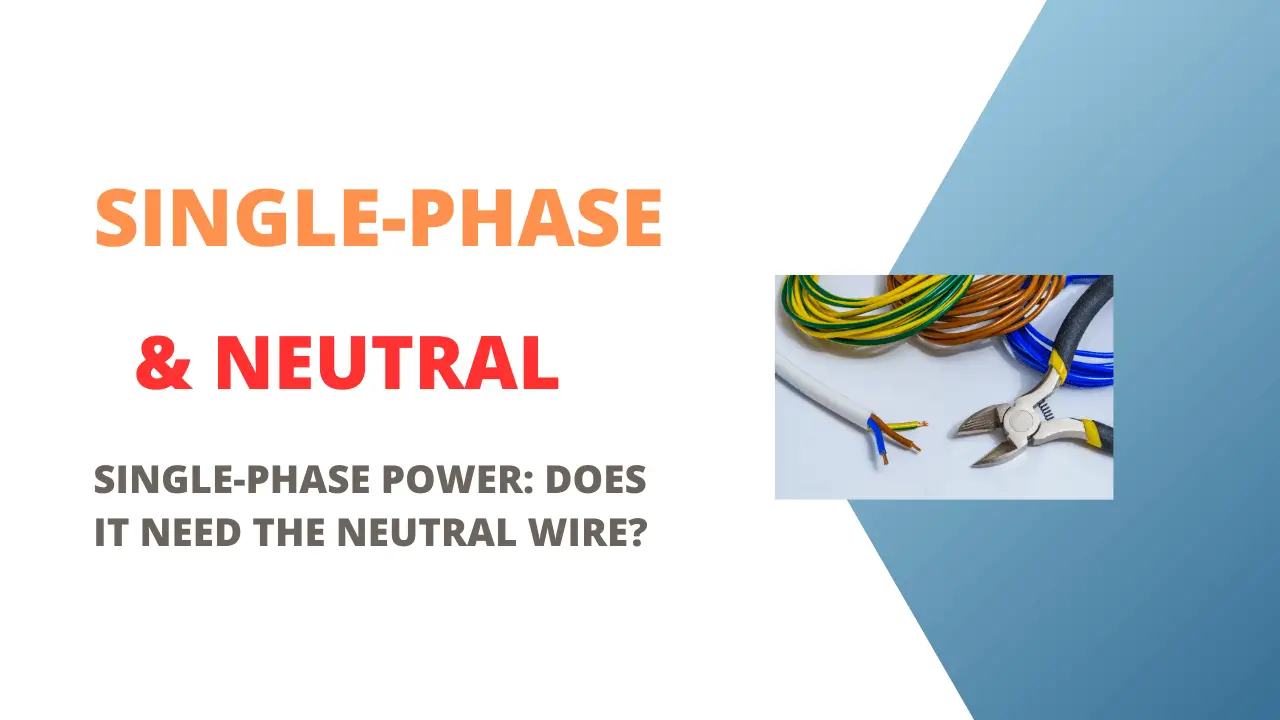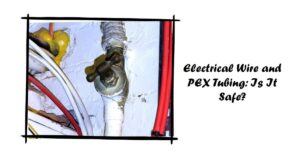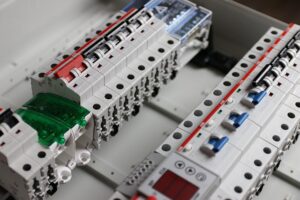Single-phase power is a common electrical configuration used in various residential and industrial applications across the United States.
Understanding the role of the neutral wire in single-phase power systems is crucial for ensuring safe and efficient electricity distribution.
Single-phase power systems generally require a neutral wire to function properly. In a single-phase power system, the neutral wire plays a crucial role in ensuring stable voltage levels, balancing the electrical load, and providing a return path for the current.
In this article, we will explore the importance of the neutral wire, examine whether single-phase systems can function without it, and delve into its impact on household and industrial applications.
Understanding Single-Phase Power
Definition of Single-Phase Power
Single-phase power refers to an electrical system that utilizes a single alternating current (AC) waveform.
It is commonly found in residential settings and small-scale industrial applications. In contrast, three-phase power systems have three AC waveforms that are out of sync with each other.
Components of Single-Phase Power System
A typical single-phase power system consists of two wires – the “hot” wire, which carries the current, and the neutral wire, which completes the circuit and provides a return path for the current. In certain cases, a ground wire may also be present to ensure electrical safety.
Role of Neutral Wire in Single-Phase Power
The neutral wire plays a critical role in single-phase power systems. It acts as a reference point and helps balance the electrical load, ensuring smooth electricity distribution. Furthermore, the neutral wire aids in grounding the system, protecting users from electrical shocks and equipment from damage.
The function of Neutral Wire in Single-Phase Power

Importance of Neutral Wire
The neutral wire is indispensable for maintaining a stable electrical system. It carries the unbalanced current from the “hot” wire and ensures that electrical devices receive the correct voltage.
Without a neutral wire, the system’s voltage might fluctuate, leading to equipment malfunction and potential safety hazards.
Grounding and Safety
One of the primary functions of the neutral wire is to provide a return path for the current, reducing the risk of electrical shocks. Connecting to the ground, it allows excess current to flow safely away from the electrical system. This process is crucial for the proper functioning of safety mechanisms, such as circuit breakers.
Balancing the Electrical Load
In single-phase power systems, various electrical devices draw power unevenly. The neutral wire helps balance the load by carrying the difference in currents between the “hot” wire and the electrical devices. This balancing prevents the overloading of specific circuits and ensures efficient power distribution.
Can Single-Phase Work Without Neutral?
Theoretical Possibility
In theory, it is possible to operate a single-phase system without a neutral wire. However, doing so poses significant challenges in maintaining a stable voltage and addressing safety concerns.
Practical Limitations
In practice, most single-phase power systems require a neutral wire to function properly. Removing the neutral wire can lead to voltage fluctuations, potential overloads, and inadequate grounding.
Examples of Single-Phase Systems Without Neutral
While rare, some older electrical installations might lack a dedicated neutral wire. These systems often compensate for the absence of the neutral wire using alternative methods for grounding and balancing the load.
Read also my comprehensive article: 240V Power: How Does It Work Without a Neutral Wire?
Impact on Household and Industrial Applications
Residential Applications
Household Appliances
Household appliances, such as refrigerators, air conditioners, and washing machines, heavily rely on stable single-phase power with a neutral wire.
Removing the neutral wire can lead to erratic appliance performance and potential damage.
Lighting Systems
Lighting systems in homes require balanced voltage for consistent brightness and safe operation. Without a neutral wire, fluctuations in voltage could lead to flickering lights and premature bulb failures.
Electronic Devices
Sensitive electronic devices, like computers and smartphones, are susceptible to voltage variations. A missing neutral wire can cause power supply issues and damage electronic components.
Industrial Applications
Motor-Driven Equipment
Industrial machinery often relies on single-phase power for specific applications. A neutral wire is vital for smooth operation and for protecting motors from damage.
Single-Phase vs. Three-Phase Systems
While single-phase systems are sufficient for certain industrial tasks, three-phase systems are generally preferred for heavy machinery and high-power applications due to their balanced power delivery.
Advantages and Disadvantages of Single-Phase Systems Without Neutral
Advantages
- Simplified electrical configurations in some cases.
- Cost savings in installations without a neutral wire.
Disadvantages
- Unstable voltage levels.
- Increased risk of electrical hazards.
- Reduced efficiency and performance of electrical devices.
Safety Concerns and Mitigation Strategies
Ground Faults and Electrical Hazards
Without a neutral wire, the risk of ground faults and electrical hazards increases significantly. Proper grounding and use of ground fault circuit interrupters (GFCIs) are crucial safety measures.
Ground Fault Circuit Interrupters (GFCIs)
GFCIs are specialized electrical devices that protect against ground faults by quickly cutting off the power supply when an imbalance is detected. They provide an added layer of safety in single-phase systems.
Earthing Systems
A robust earthing system is essential to divert excess current to the ground safely. Adequate earthing helps protect against electrical shocks and potential equipment damage.
Case Studies and Real-World Examples
Examples of Single-Phase Systems Operating Without Neutral
Rare instances of single-phase systems without a neutral wire exist in older buildings and rural areas. These systems often rely on other grounding methods and may face operational challenges.
Lessons Learned from Past Incidents
Historical incidents involving single-phase systems without neutral underscore the importance of proper electrical configurations and safety measures.
These incidents have prompted regulatory improvements to ensure safer electrical installations.
Future of Single-Phase Power Systems
Technological Advancements
Advancements in power electronics and smart grid technologies may lead to more efficient and reliable single-phase power systems in the future.
Integration of Renewable Energy Sources
As renewable energy sources become more prevalent, single-phase power systems may see increased adoption in distributed energy generation scenarios.
Conclusion
In conclusion, the neutral wire plays a vital role in the functionality and safety of single-phase power systems.
While it might be theoretically possible to operate a single-phase system without a neutral wire, doing so poses practical challenges and safety concerns.
For optimal and safe electricity distribution in both residential and industrial applications, a properly grounded and balanced single-phase system with a neutral wire remains the preferred configuration.
Want to learn more about electricity? Check my YouTube channel!
Are You An Electrical Engineer or Electrician?
Install my Free On Google Play Now! It’s 100% Free
The staff I recommend (Amazon Affiliate Links to products I believe are high quality):
- Economy 120 Volt/60Hz AC Power Source – Step-Down Voltage & Frequency Converters 1800W
- UNI-T Digital Multimeter Tester UT139C
- 50-Amp Extension Cord for RV “100ft”
- Voltage Stabilizer 110/220v
- Hair Dryer “best selling“
- TOSHIBA EM131A5C-BS Countertop Microwave Ovens
Disclaimer: This contains affiliate links to Amazon products. I may earn a commission for purchases made through these links.



